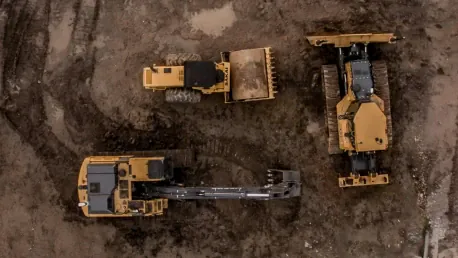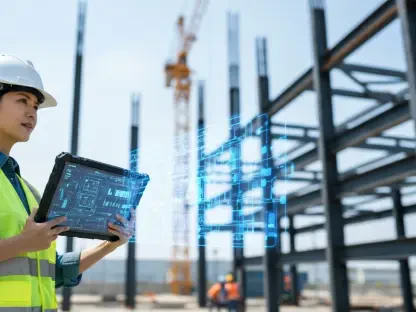Recently, the construction industry has started shifting gears towards electric vehicles (EVs), given their importance for sustainability and emission reduction. Naturally, as environmental concerns grow, construction operators are contemplating a common concern:
How does a company make a solid return on investment (ROI) when adopting EVs?
To achieve environmental standards, they must navigate upfront costs, operational efficiencies, and long-term savings to ensure that the adoption of EVs does not only meet the environmental standards—but will also deliver profitability and competitiveness in a rapidly evolving market.
More importantly, tax incentives and grants are available around the globe for clean technologies. It’s the perfect time to go green.
Entering a New Paradigm
Environmental regulations are tightening, urban areas are growing, and green construction projects are booming. As time goes on, clients want higher eco-friendliness not just as an additional perk, but as the rule, rewarding firms that comply with these conditions.
Attracting Eco-Conscious Clients
Winning public sector construction bids is both critical and complex. While many assume that the lowest bid ensures success, the reality is more nuanced. Consistent winners set themselves apart with strategic insight, a systematic approach, and a commitment to sustainability.
A lower carbon footprint can be the deciding factor in winning a bid. Environmental laws and green construction standards go a long way in boosting credibility and giving you the edge.
Adopting electric vehicles can open doors to new projects, especially those requiring green practices. A green fleet improves brand image and gives construction firms an edge over competitors still relying on traditional equipment.
Green Fleets Bring Immediate and Long-Term Financial Benefits
The switch to EVs could entirely bury fuel bills by eliminating the need for diesel. Electric motors use less power to do the same tasks as fossil fuel motors.
Moreover, electric rates almost always run more stable than the fluctuating cost of fossil fuels.
It’s expected the construction industry will reach a tipping point by 2025, with most heavy equipment leaving diesel engines behind in favor of electric or hybrid power. The trend is only beginning, as it’s a transition that is set to grow steadily in the years ahead.
Reduced Maintenance Overheads
In traditional vehicles, oil changes and complicated mechanical tune ups can result in a lot of downtime, but there’s no need for either.
Electric motors have fewer moving parts than diesel engines. This means less frequent breakdowns, fewer repairs—and much lower maintenance costs. Not only does this help lower direct costs, it reduces disruptions on site, which in turn allows your team to work more consistently.
Maximizing Productivity and Efficiency
The consistent performance of EVs means fewer slowdowns due to underperforming equipment. Moreover, with on-site charging options, such as portable solar stations, your electric fleet can operate efficiently without long breaks for refueling.
The ability to charge overnight or during off-peak hours ensures vehicles are ready for work every day, minimizing interruptions. Additionally, using renewable energy to power your fleet can reduce your reliance on external electricity costs, maximizing energy savings.
Lowering the Total Cost of Ownership
This criterion will decide whether EVs are phased into construction as the standard offering, or if they are simply a marketing ploy: Total cost of ownership (TCO).
There’s good news. IDTechEx research reveals that at today’s battery costs, the TCO is expected to shift in favor of EVs, making the technology more feasible for the industry. Relying on renewable energy to power your fleet helps you minimize dependence on external energy sources for electricity, hence energy savings.
The overall concept of savings through electric construction machines is not going to produce transformative results in the short run. First-generation original equipment manufacturers (OEMs) are still expanding their portfolios, and market leaders such as John Deere and CAT are lagging behind.
However, JLG is at the forefront of this imperative—delivering their first electric telehandler.
With a promise to help construction businesses “take charge,” this all-electric machine is specially built to take your productivity to new heights—on and off the job site.
It is cheap to run, and the charging method offers efficient use of your time and thus guarantees high returns on investment. Whereas, high power to size ratio and very low noise emission contributes to the removal of barriers to productivity wherever work must be done.
Dallas 1 Leads By Example
Dallas 1 was started in 1985 by Bart Azzarelli with his son BJ Azzarelli the current manager. This family-owned construction firm embraces the core values of faith and workplace support.
The company primarily deals with water lines, storm systems, sewers, and forced main lines. Most of their business is with the public sector, especially with the City of Tampa, where they handle line repairs, regular service, and emergency service.
The decision to go for EVs at Dallas 1 was informed by the efficiency of the financial factors. The company wanted to cut fuel bills, which sometimes go up to $60,000 per month, and other expenses on maintenance.
BJ’s personal experience with EVs, starting in 2016, helped him realize the advantages of easier maintenance and cost reduction. As a result, he began discussions with the company’s CFO about introducing EVs to their fleet. This shift aligns with real market trends, as the adoption of EVs in the U.S. continues to grow rapidly, offering economic and operational benefits for Dallas 1’s mixed-energy fleet.
Conclusion
According to The Carbon Trust, construction and demolition are responsible for about 13% of each year’s global carbon emissions. Naturally, there’s a great need for construction businesses to meet environmental standards.
However, adopting electric vehicles is not just about compliance, but about positioning for long-term profitability. The process of incorporating EVs in construction fleets can have some difficulties, starting with the costs of acquisition and ending with infrastructure investments—but the advantages are apparent:
No fuel costs
Lesser maintenance fees
Availability of environment-friendly projects
And a greener, sustainable tomorrow
Organizations that start adopting EVs now will be in a vantage position when the market fully embraces the move to sustainable construction.









